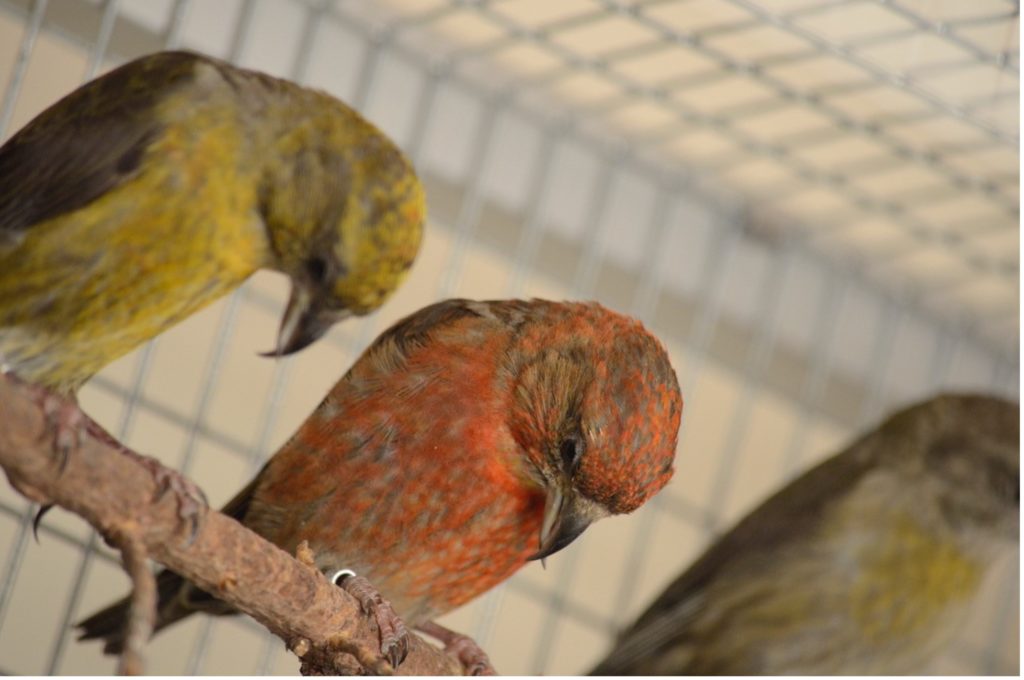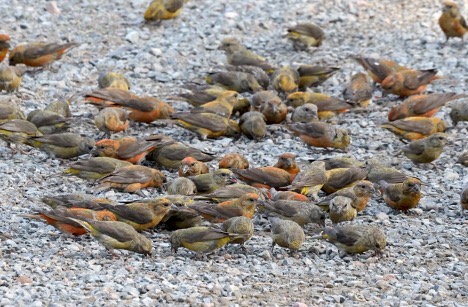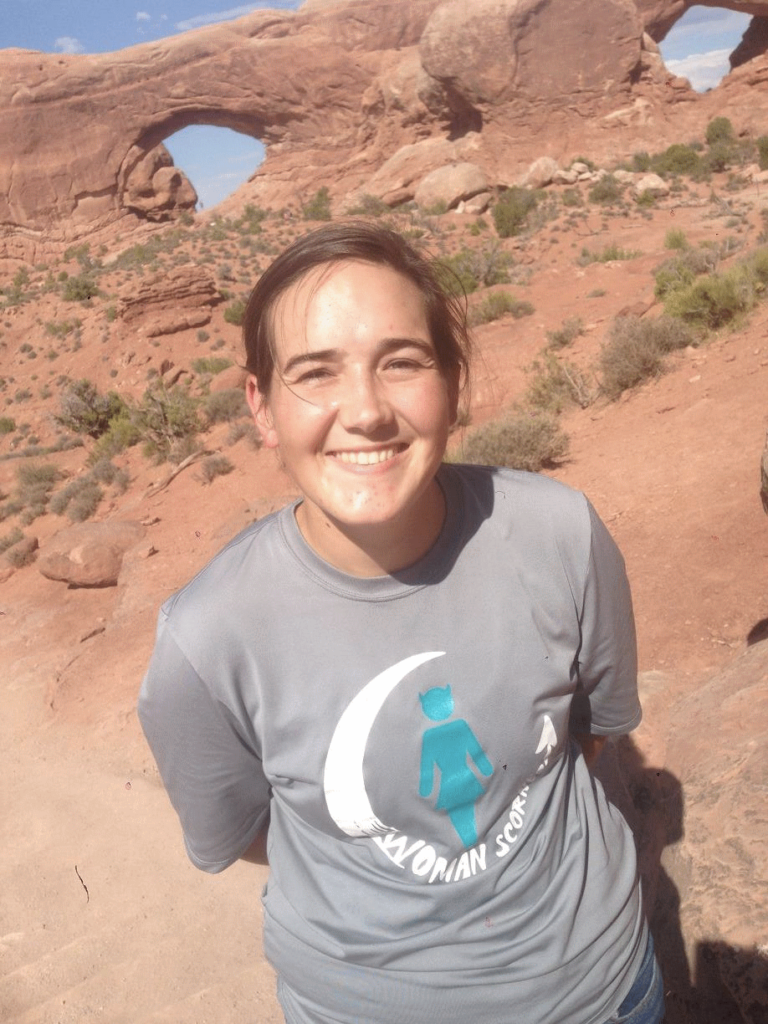If we have learned anything from the events of the past few years, it is that life can be highly unpredictable. Animals (including people) must integrate lots of – often conflicting – information when deciding how to respond to a chaotic environment. This is a subject that Dr. Jamie Cornelius, a biologist at Oregon State University, is particularly interested in. “The common thread of what I’m most interested in is how animals cope with unpredictability,” Dr. Cornelius explains, “but what varies across the projects is what type [of unpredictability].” Currently, she is studying how the red crossbill (Loxia curvirostra), a species of bird that migrates nomadically to track food availability, incorporates social cues (such as other bird’s calls or behavior) into their own response to food deprivation.

Red crossbills in the lab. Photo credit: Dr. Jamie Cornelius
This work initially started when, during her Ph.D. research, Dr. Cornelius wanted to study the bird’s response to food stress, using the red crossbill as a model for how food stress motivates migration decisions. She created a stressor for the birds using food restriction, and then measured levels of activity and corticosterone (a hormone associated with the stress response) in the blood. As expected, food restriction increased the amount of corticosterone circulating in the blood. However, because these birds are highly social in the wild, they had to be paired in the lab. On a whim, Dr. Cornelius decided to see whether stress in the partner would affect the response of the individual when faced with food stress. Surprisingly, when birds were paired with a food stressed partner they showed a larger corticosterone response than those with a well-fed neighbor. Somehow, these birds were recognizing and responding to social stress.
Excited by this result, Dr. Cornelius wanted to determine if this corticosterone response was somehow adaptive in whether an individual could benefit from it. She decided to test how the timing of the partner’s stress would influence how individuals may cope with stressors themselves. Dr. Cornelius tested this by pairing birds with a partner that was either (termed “predictive information”) or food stressed at the same time (termed “parallel information”). When birds with predictive information had time-limited access to food, they ate more and lost less body mass compared to birds with parallel information. Birds with predictive information even had higher gut mass, an organ which shrinks when birds don’t have enough food – making it more difficult to gather nutrients from food they do have. Each of these results indicated that not only is social information important, but the timing of that information seemed to help the individual prepare better for their own lean times.

Red crossbills in the wild. Photo credit: Tom Kogut
These responses to predictive information may mimic the physiological changes red crossbills go through in the wild as they prepare to migrate. For the red crossbill, the choice of whether to migrate or not likely involves lots of difficult decision making. “There’s probably a strong urge to stay where things are familiar but, at some point, the decision flips. These experiments are designed to start asking those questions [of why and when],” says Dr. Cornelius. While it’s impossible to say what one will do in the face of a chaotic environment, research like that of Dr. Cornelius is giving us some ideas of how those around us may affect our decision-making, even at the gut level.
Dr. Cornelius’ work on the effect of paired stress can be read here: https://doi.org/10.1016/j.yhbeh.2017.10.002
See more about Dr. Cornelius’ work here: https://www.corneliuslab.org/
The author
Kate Hunter (she/her)
5th year, Utah State University
Social biology and life history trade-offs
SICB: Animal Behavior, Ecology and Evolution
Hobbies: Crafting, hiking, biking
Lab website: kapheimlab.com

